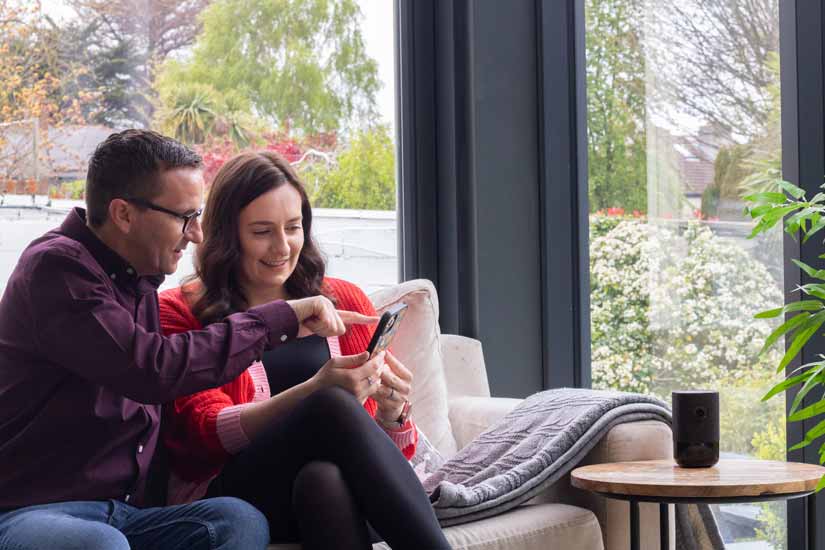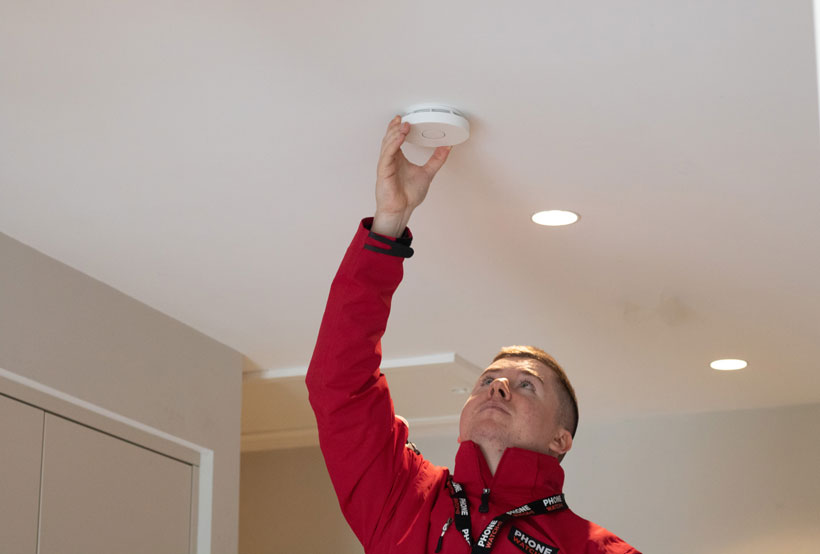
How to create a smart home
Creating a smart home involves integrating various devices and technologies to enhance the automation, convenience, security, and efficiency of your home.
A smart home system enables you to control multiple different devices from an app on your phone enabling you to manage aspects of your home even while you are away.
Here's a step-by-step guide to help you get started and create a smart home:
How to turn my home into a smart home – where to begin
The first step when creating a smart home is defining what you want to achieve. What are your primary motivations for smart home technology. Do you want to improve the aesthetics of your home? Are you seeking to just make life easier? Or are you seeking to improve your overall level of security? Identify the areas or aspects of your home that you'd like to automate or control remotely.
A key part of this step is also understanding what is within your budget. Some smart home products may also help you to save money over the long term by controlling your energy use for certain appliances.
What should a smart house have - choosing your smart home devices & systems
A smart home usually comes with a central hub or different hubs to control multiple devices. You may want to choose a device which will have easy integrations with your existing smart home appliances. E.g At PhoneWatch, we have a Smart Home Alarm system and if you already a customer and looking at getting Smart Plug, if may make more sense to get a PhoneWatch Smart Plug which you can control from the PhoneWatch App rather than using 2 different apps.
Based on your goals, choose the types of smart devices you want for your smart home. Ensure that the devices you choose are compatible with your chosen smart hubs or ecosystem.
Determine the specific purpose you want the smart device to serve. Are you looking to enhance security, improve energy efficiency, or simply make your daily life more convenient? Common smart home device categories include:
- Smart Plugs: Turn regular appliances into smart devices.
- Smart Speakers: Use voice control to manage devices and smart assistant features.
- Smart Lighting: For controlling lights remotely and automating lighting schedules.
- Smart Thermostats: To optimize heating and cooling and save energy.
- Smart Home Alarm System & Security Cameras: For home surveillance and monitoring.
- Smart Doorbell: See who is at the door and respond from your phone
- Smart Locks: Enhance home security and provide keyless entry.
- Smart Sensors: Such as motion sensors, door/window sensors, and smoke detectors for safety and automation.
- Smart Appliances: Appliances like refrigerators, lawnmowers, ovens, and washing machines with smart features.
- Smart Entertainment: Smart TVs, streaming devices, and sound systems.
- Smart Blinds/Curtains: For automated control of natural light.
Installing, integrating, and automating smart home devices
Follow the manufacturer's instructions to install and set up each device. This might involve connecting them to your Wi-Fi network and configuring their settings through a mobile app. Link each device to your chosen smart hub or ecosystem.
Secure your smart home network by using strong passwords, enabling two-factor authentication, and keeping your devices' firmware updated to protect against potential vulnerabilities. Integrate third-party services if needed. For instance, you can link your smart home devices with services like IFTTT (If This Then That) to create custom automation sequences. Automation routines or scenarios can be set up such as you might create a "Good Morning" routine that turns on lights, adjusts the thermostat, and plays your favorite news briefing when you wake up.
Always, be mindful of the data your devices collect and how they're used. Review privacy settings and consider disabling features that you're not comfortable with. Each devices firmware and software should be regularly updated to ensure optimal performance and security.
Open up a world of smart home automation and create a smart home to remotely manage your lighting and electricals.
Example: How PhoneWatch’s Smart Home Alarm System works
With the PhoneWatch smart home alarm system you can turn your alarm on or off, set timers for your lights and devices, and see, hear and talk to your family at home. All of this can be done from the PhoneWatch app on your phone. You can control all the following devices as well as receive notifications:

- PhoneWatch Doorbell Camera: Get notified on your phone when somebody is at the door, and you can respond from your phone.

- PhoneWatch Security and CCTV Cameras: Get a notification when the camera is triggered by motion and see what has triggered it from the PhoneWatch app

- PhoneWatch Smart Plug: Set up automation sequences from the PhoneWatch app to turn on and off appliances.

- PhoneWatch Smoke Sensor: The PhoneWatch Alarm Receiving centre will be notified as well as you when the smoke alarm detects smoke in your home.

- PhoneWatch PIR cameras and Motion Sensors: Your app will get a notification as well at the PhoneWatch Alarm Receiving Centre when motion is detected near the camera and motion sensors. Our smart alarm system is monitored so our agents will then contact you and/or the emergency services.
Next steps
Remember that creating a smart home is an ongoing process, and you can customize it to suit your lifestyle and preferences. Keep up with the latest developments in smart home technology to continue enhancing your living space.
Relax this year, safe in the knowledge that your home is protected, while you enjoy all-important time with your significant other. Learn how to create a smart home and enhance your security and convenience.
Your smart home comes to life with remote control of your appliances. Learn more about how to create a smart home with our guide. Our smart plugs let you manage lamps and electricals through your PhoneWatch app.
Smart Home Made Easy: Our home security system opens up a world of smart home automation. Learn how to create a smart home and remotely manage your lighting and electricals. All Zigbee compliant to adapt to your changing needs.
Here at PhoneWatch, we have taken an in-depth look at the latest statistics from the Central Statistics Office (CSO) to give you an overview of burglaries in your area from 2016 to 2017. We also have security tips to help you protect your home and create a smart home for enhanced safety.
From house alarm systems to tailored home security, PhoneWatch create and install alarm systems to match your budget and give you peace of mind. We are trusted by over 118,000 homes in Ireland to keep them safe every day. Get a personalised home security quote today.



